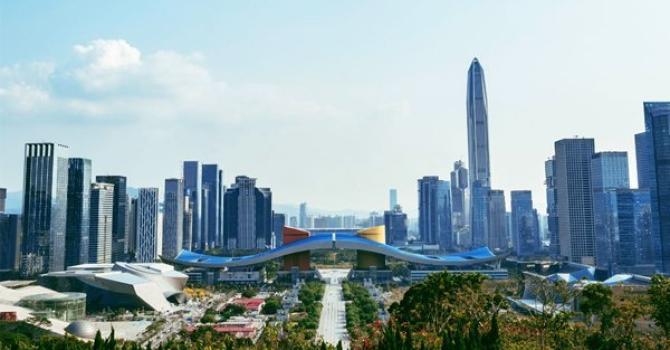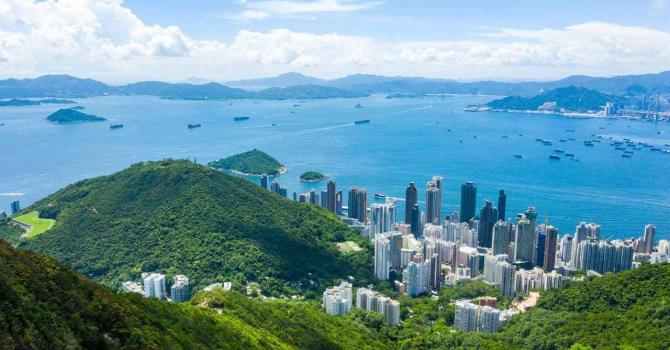Hong Kong’s ‘revolution of our times’ should focus on climate change
The city’s youth would find Beijing more open to a dialogue on how the country can enhance its global leadership in the fight against climate change
Hong Kong can play a role in bringing the US and China together on the issue
Hong Kong's young people might ponder their future through the lens of climate change rather than the narrower “revolution of our times”. If they did, they would find the threat to be very large and real, backed by authoritative evidence, and it wouldn’t matter where they lived in the world. They, and their children, are going to be greatly affected.
Their future is in the hands of the world’s major carbon emitters, which include China, the United States, the European Union, India, Russia and Japan.
Governments from around the world meet annually to negotiate details to a framework treaty agreed in 2015 in Paris, known as the Paris Agreement, the purpose of which is to give humanity a chance to stay within a safe climate space. The treaty comes into force on January 1, 2020.
This year’s meeting, which just ended in Madrid, was intended to build momentum towards next year’s meeting in Glasgow, when new and updated commitments to meet the goal to keep global warming below 2 degrees Celsius, and strive for less than 1.5 degrees, would be unveiled.
The most important of the issues the Madrid meeting intended to tackle was pushing for enhanced ambition in the commitments from countries because the world is in fact heading for a temperature rise of 3.2 degrees by 2100.
In other words, we are way off the mark and the world is hurtling towards a climate danger zone. The Madrid gathering was to add urgency to advance the cause.
It failed, and the major cause was the reluctance of the US to play a part as the Trump administration is about to withdraw from the Paris agreement because it would “undermine” the American economy. The previous Obama administration entered into the Paris agreement in 2015.
In addition, no agreement was reached on a mechanism to alleviate “loss and damage” from climate-related disasters that have wrecked many parts of the world. Small or poor countries have never been major emitters but they have to cope with severe weather events and losses they can’t afford. They blame the US for sabotaging a possible agreement.
With the US about to leave the Paris agreement, it blocked all discussions over long-term finance to help less developed nations. Some delegates from developing countries have accused the US of a “crime against humanity”.
Young people everywhere will experience literally a different world in the coming decades and their children will start life under different climate conditions. That’s why global movements such as Climate Emergency and Extinction Rebellion have come about. That’s why Swedish teenager climate campaigner Greta Thunberg pipped Hong Kong protesters to be Time magazine’s “person of the year” in 2019.
What does all this mean for Hong Kong? In 2015, China surpassed the US to become the world’s largest carbon emitter. China’s emissions increased as its economy grew. Together, China and the US produce over 40 per cent of the world’s annual carbon emissions. Moreover, the US has the largest carbon footprint on a per capita basis. The average Chinese emits less than half of the amount emitted by the average American.
Historically, the US has contributed most of the world’s emissions and has the greatest responsibility and ability to mitigate the damage. Going forward, China is the largest emitter and has responsibility to do more.
Hong Kong is a medium-sized city in China with a sizeable carbon footprint. In this sense, we are no different from other major cities and regions in big economies. In other words, Hong Kong can be more ambitious in meeting the climate emergency.
The Hong Kong administration is scheduled to issue its enhanced commitment in time for the climate change meeting in Glasgow. Young people should pay more attention to ensure their city’s updated climate plan is suitably ambitious.
Moreover, Hong Kong’s youth would have a much better chance of opening dialogue with Beijing if the focus was on China taking on global leadership to speed up carbon emissions reduction as the US federal government’s leadership in the area recedes. China can work with American states, such as California, with which it already has a partnership agreement on climate change.
It goes without saying that China can do more on the global diplomatic stage as well. One way is to make more funds and technology available to developing economies.
It was announced in Madrid that China had allocated 1 billion yuan (US$143 million) to help developing countries tackle global warming. But the amount is less than its previous pledge in November 2014, when China and the US issued a joint declaration in which China committed to pay 20 billion yuan to the China South-South Climate Cooperation Fund and the US agreed to pay US$3 billion to the Green Climate Fund to help poor nations.
The Paris Agreement owed much to Sino-US cooperation at the time. The two were able to put side their differences and work on areas of agreement. It is obvious that the two countries need to cooperate for the world to meet the challenge of the climate emergency.
Instead of being a point of contention in their bilateral relations, as is the case with the ongoing protests, Hong Kong could make a larger global contribution by bringing China and the US together.



